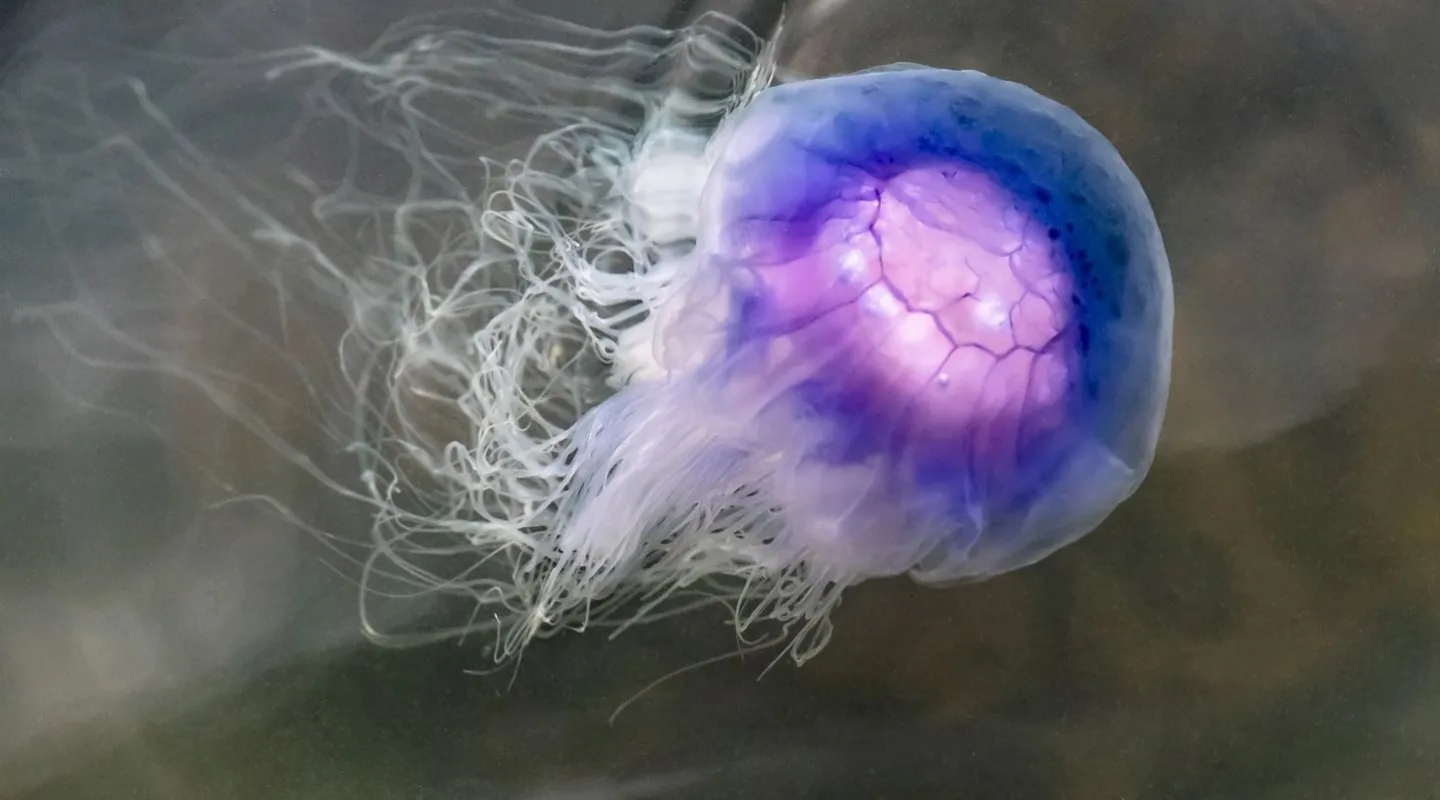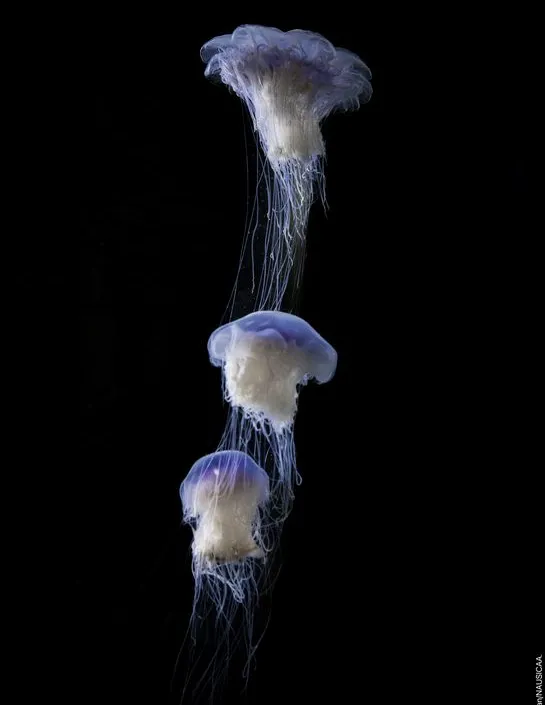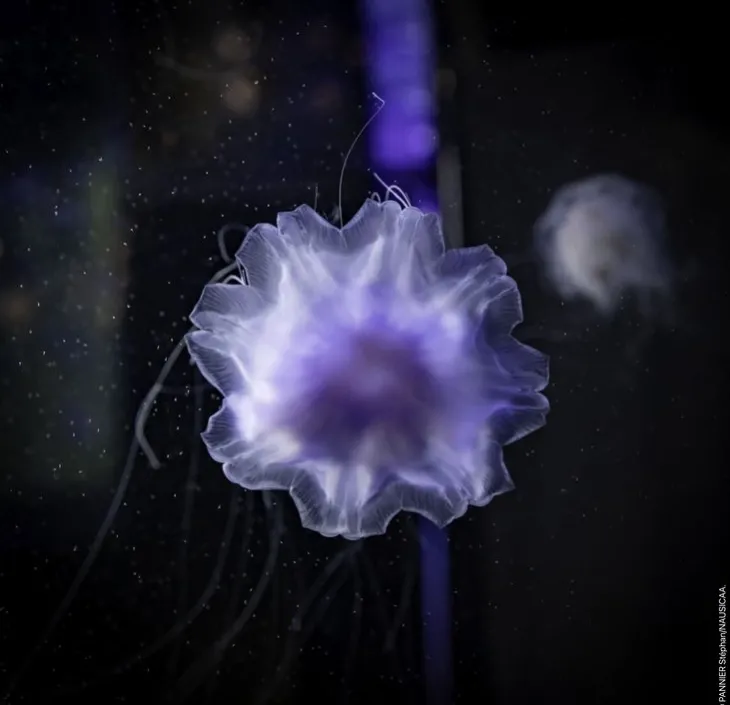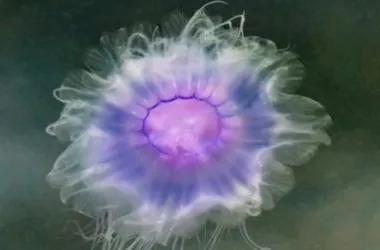The blue jellyfish is often likened to the lion's mane jellyfish, Cyanea capillata which can grow up to 2 metres in diameter.

Jellyfish & Ctenaria

Identity card
North-East Atlantic, French Channel and North Sea. Atlantic Ocean, from Iceland and Norway to Portugal.
Pelagic zone, on the coasts of Northern Europe between May and September.
15 to 30 cm for the bell.
Phyto- and zooplankton, fish eggs and larvae.

It is known as bluefire jellyfish.
The blue jellyfish is often likened to the lion's mane jellyfish, Cyanea capillata which can grow up to 2 metres in diameter.
Blue jellyfish are planktonic organisms and are therefore carried by currents. Blue jellyfish appear from May to September-October on the coasts of Northern Europe, feeding on plankton (phyto- and zooplankton, fish eggs and larvae).
Jellyfish are pelagic animals.
Cyanea lamarckii is a rather small jellyfish, with a bell varying in size from around 15 to 30 cm in diameter.
It is fairly transparent, particularly around the edges of its bell. The colour of the bell deepens to blue or even violet in adulthood, but the colours vary between yellow, orange, white, blue and violet.
The bell is divided into 8 lobes and in their indentations are the rhopalies which concentrate its receptor organs such as the ocelli, the eyes of the jellyfish.
The mouth under the bell is surrounded by 4 oral arms whose length is equal to the diameter of the jellyfish.
The jellyfish can have up to 800 fine tentacles that resemble a head of hair. These can measure up to 25 times the diameter of the parasol. The tentacles contain cnidocytes, which are the stinging cells of jellyfish, sea anemones and coral.
The jellyfish catches its prey with its tentacles, which bring the food to the oral arms. These direct the food towards the jellyfish's mouth. This predatory jellyfish also feeds on other jellyfish.
This species is quite stinging for humans, and it is quite difficult to spot the long, thin tentacles underwater.
Mankind and Shores

The Ocean Mag
In the spotlight
A look back at the year's births at Nausicaá.

Article
The Portuguese Parliament has adopted a moratorium banning seabed mining in its territorial waters until 2050.
Article
Combining art, science and industry to restore coral reefs.